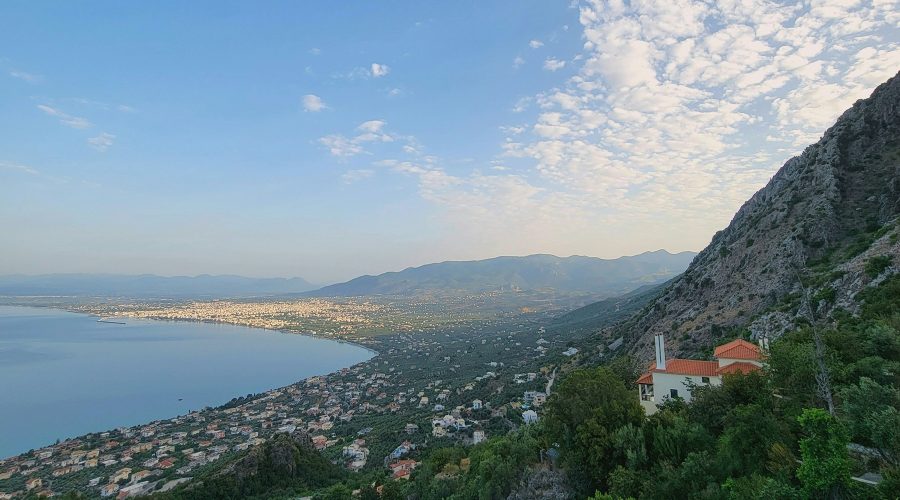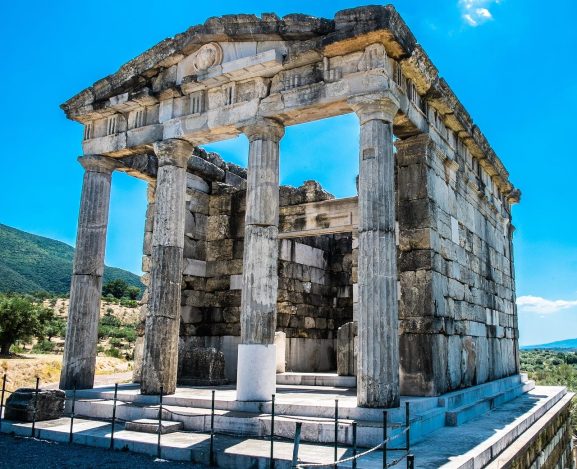Καλαμάτα
Η ταυτότητα της πόλης
Χτισμένη στο μυχό του Μεσσηνιακού κόλπου και στους πρόπο δες του Ταϋγέτου, η Καλαμάτα αποτελεί οικονομικό, εμπορικό και πολιτιστικό κέντρο της νότιας Πελοποννήσου.
Διαθέτει αμέτρητες ομορφιές φυσικές, αρχιτεκτονικές και πολιτιστικές και συνάμα βρίσκεται στην καρδιά μιας περιοχής με πλούσια ιστορία και με μνημεία παγκόσμιας εμβέλειας σε απόσταση περίπου μίας ώρας όπως η αρχαία Μεσσήνη, το ανάκτορο του Νέστορα, η αρχαία Ολυμπία, ο ναός του Επικούριου Απόλλωνα, τα ενετικά κάστρα της Μεσσηνίας, η Μάνη και ο Μυστράς.
Το πλούσιο παρελθόν βρίσκει τη συνέχειά του στο δυναμικό παρόν της πόλης. Μιας πόλης σύγχρονης και ζωντανής χειμώνα-καλοκαίρι, στην οποία κινούνται καθημερινά 100.000 άνθρωποι. Μιας πόλης με υψηλού επιπέδου νοσοκομείο, διεθνές αεροδρόμιο, πανεπιστημιακά τμήματα, σχολές ΤΕΙ, σύγχρονους χώρους πολιτισμού και σημαντικές αθλητικές εγκαταστάσεις. Τα πολιτιστικά δρώμενα, τα ιστορικά και θρησκευτικά μνημεία, τα μουσεία, η γειτνίαση βουνού και θάλασσας, τα εκλεκτά τοπικά προϊόντα πυλώνες της μεσογειακής δίαιτας σφραγίζουν τη φυσιογνωμία της.
Έντονη είναι και η νυχτερινή ζωή στην Καλαμάτα και στα προάστιά της. Μπαρ και γραφικά ταβερνάκια λειτουργούν τους χειμερινούς μήνες στο Ιστορικό Κέντρο, ενώ το καλοκαίρι η διασκέδαση μεταφέρεται στα κλαμπ και τα μπιτς μπαρ που βρίσκονται δίπλα στο κύμα. Ξεχωριστές βραδιές προσφέρει η Βέργα, όπου λειτουργούν νυχτερινά κέντρα με καταπληκτική θέα στη θάλασσα και στην πόλη της Καλαμάτας.
Μια ματιά στην ιστορία
Σύμφωνα με το μύθο, ιδρυτής της πόλης θεωρείται ο γιος του Ερμή και της Φυλοδάμειας, Φάρις. Από αυτόν προέρχεται το αρχαίο όνομά της: Φαρές. Οι Φαρές ήταν χτισμένες στη θέση του φράγκικου κάστρου και, όπως αναφέρει ο Όμηρος στην Ιλιάδα, συμμετείχαν στον Τρωικό Πόλεμο. Αργό τερα υποτάχθηκαν στους Λάκωνες κι έπειτα εντάχθηκαν στην επικράτεια της γειτονικής Μεσσήνης. Βαθμιαία, όμως, έχασαν τη σημασία τους.
Τον 10 αι. μ.Χ. η πόλη είχε πλέον το όνομα Καλαμάτα, ενώ τον 12ο αιώνα, είχε αποκτήσει ιδιαίτερη σημασία. Μεγάλη ακμή θα γνωρίσει μετά την κατάληψή της από τους Φράγκους (1205). Μάλιστα, ένας από τους ηγεμόνες τους, ο Γουλιέλ μος Βιλεαρδουίνος, ονομαζόταν Καλομάτης, επειδή γεννήθηκε στην Καλαμάτα Μετά το 1470 θα βρεθεί υπό μακρόχρονη οθωμανική κατοχή, η οποία διακόπηκε από σύντομες περιόδους ενετικής κυριαρχίας.
Η Καλαμάτα ήταν η πρώτη πόλη που απελευθερώθηκε από τον τουρκικό ζυγό, στις 23 Μαρτίου 1821. Την ημέρα εκείνη, επικεφαλής των επαναστα τημένων Ελλήνων ήταν οι Θ. Κολοκοτρώνης, Πετρόμπεης Μαυρομιχάλης, Νικηταράς και Παπαφλέσσας. Μετά την απελευθέρωσή της, τελέστηκε δο- ξολογία στους Αγίους Αποστόλους, ναό σύμβολο της πόλης, και ευλογήθηκαν οι σημαίες των αγωνιστών της ελευθερίας.
Ακολούθησε ένας αιώνας ακμής, η οποία βασίστηκε στο εμπόριο των αγροτικών προϊόντων της μεσσηνιακής γης (σύκα, λάδι, ελιές, μετάξι, σταφίδα) και της τοπικής βιοτεχνικής παραγωγής. Στα χρόνια αυτά η πόλη πήρε το προσωνύμιο «Μασσαλία του Μοριά».




